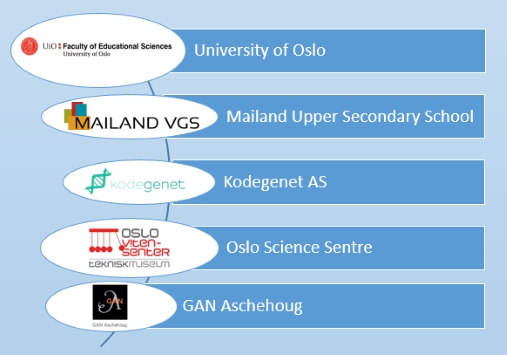Background
The Norwegian Ministry of Education and Research commissioned in 2016 a white paper looking into the lack of awareness, identification and knowledge of GT (Gifted and Talented) students in Norway. The report concludes that there is little understanding about the potential and needs of these students, thus encouraging additional research in the field (NOU 2016:14). This report illustrates an emerging political interest in adapting education for GT students. Recently, four talent centers have been established, but they are offered to a very limited number of GT students, and mainly focus on high achievers, not the under-achievers and students with different challenges.
However, renewed focus on in-depth learning across all levels is now possible, as the curricula in all subjects in Norway for primary and secondary education are being reworked to better support the development of 21st century skills. This provides an opportunity for gifted education in areas such as creativity, entrepreneurship, innovation, collaboration and technology, which fits perfectly within the framework of a maker-space. A maker space setting (e.g. lab) in schools themselves might provide education adjusted according to their students’ potential.
Aims and Research Questions
Main objective of this project is to develop and quality assure learning designs (LD) for differentiated education for GT-students. These are to be published on an open internet portal in cooperation with the Norwegian Center for Natural Sciences, to be freely used by teachers nationwide. The project in cooperation with LWR project (see below) have the following secondary aims: identify and assist underachievers, increase motivation, decrease drop-out and school refusal rates, increase psycho-social well-being for GT students by allowing them opportunities to work together with like-minded peers.
This pilot project will last one year, and is divided into four work packages (WP):
- WP1: Review of research related to development of LDs in a makerspace setting for GT students. Research connected to teaching practices enhancing 21st century skills is of special interest.
- WP2: The development of pilot LDs, on which the data analysis in WP4 will be based.
- WP3: The 24 students in the pilot project will be tested with WISC-V to validate the project’s identification instruments and processes.
- WP4: Data collection and analysis of pros and cons of the pilot LDs from WP2, which includes and evaluation of the project based on the collected data.

Financing
This research project will use data from project LWS (Learning and Wondering in Science), and funding is provided from the Regional Research Funds (RFF) – Capital Region, Akershus County and Tekna – a union for those working in STEM (Science, Technology, Engineering, and Mathematics) subjects.
Partners

Publications
Mørch, A.I., Litherland, K.T., & Andersen, R. (2019). End-User Development goes to School: Collaborative Learning with Makerspaces in Subject Areas. Proceedings of EUD-2019, the 7th International Symposium on End-User Development, Hertfordshire, UK, 10-12 July, 2019. Published by Springer. In Press. PDF
